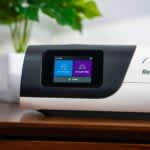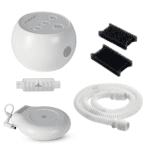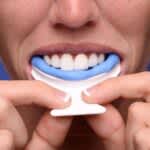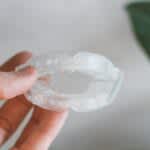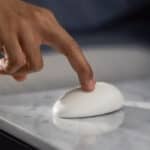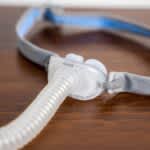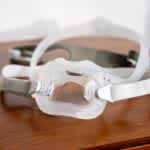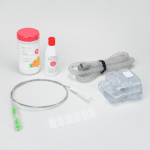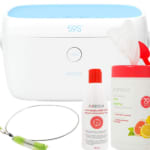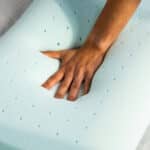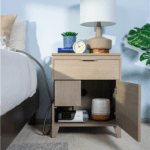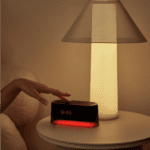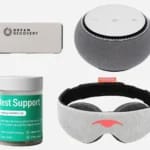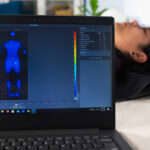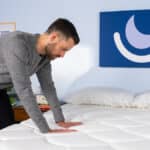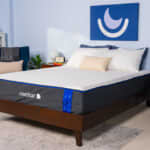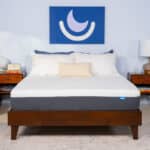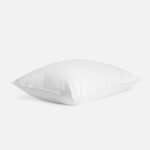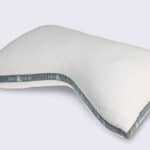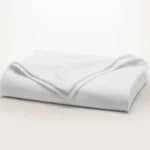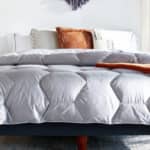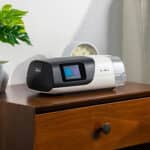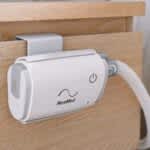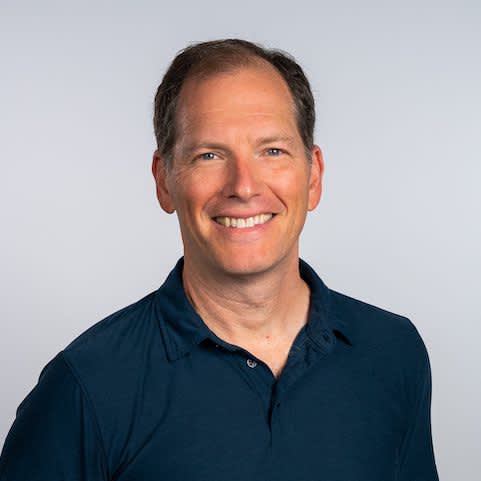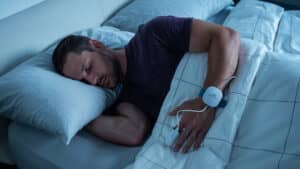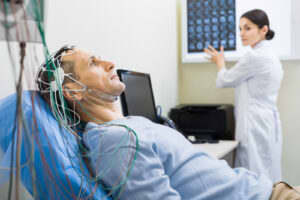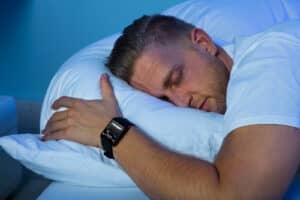For those who have symptoms like daytime sleepiness, snoring, or strange movements during sleep, a doctor may suggest taking a sleep study. During a sleep study, doctors use a process known as polysomnography to collect information about a person’s sleep-related body functions. Polysomnography is usually performed overnight at a sleep clinic, although some tests may be done in the person’s home.
Knowing what to expect from a sleep study can make the process easier. We take an in-depth look at what polysomnography entails and what this procedure reveals about how you sleep.
Key Takeaways
- A sleep study, also known as polysomnography, is a test used to diagnose sleep disorders.
- During a sleep study, various physiological activities are monitored to gather data on sleep patterns and brain activity.
- Sleep studies provide valuable insights and help sleep specialists develop appropriate treatment plans.
- A sleep study is essential for diagnosing and treating sleep disorders like sleep apnea.
What Is a Sleep Study?
A polysomnogram (PSG) consists of multiple tests that measure physical functions related to sleep. These tests normally include:
- Electroencephalography (EEG): An EEG measures and records brain waves during sleep to identify how long the person spends in each sleep stage.
- Electromyography: This test monitors and analyzes muscle contractions.
- Electrocardiography (EKG): Using electrodes stuck to the skin, an EKG measures electrical impulses in the heart. EKGs can identify irregular heart rhythms and slow or elevated heart rates.
- Pulse Oximetry: A device called a pulse oximeter can be attached to the finger, earlobe, or toe to measure blood oxygen levels.
- Electrooculography: An electrooculogram measures eye movements to help researchers estimate sleep stages.
- Airflow Sensors and Plethysmographic Strain Belts: Sensors near the nose and mouth measure airflow, and belts are strapped around the chest and abdomen to monitor movements associated with breathing effort.
- Microphone: A microphone near the sleeper picks up snoring sounds.
Why Are Sleep Studies Done?
Sleep studies are used to rule out or diagnose disorders such as:
- Sleep apnea and other sleep-related breathing disorders
- Narcolepsy
- Nocturnal seizures
- Rapid eye movement (REM) sleep behavior disorder
- Sleep-related movement disorders such as periodic limb movement disorder
Polysomnography results may also help doctors determine if someone has restless legs syndrome. Though polysomnography is not generally used for circadian rhythm sleep-wake disorders, the results may highlight discrepancies indicative of abnormal sleep rhythms. Similarly, doctors may order polysomnography to assist in the diagnosis of sleep bruxism (teeth grinding) or parasomnias like sleepwalking, even if a sleep study is not technically required in these cases.
For people with sleep apnea, polysomnography can be performed while wearing a positive airway pressure (PAP) device. These devices supply pressurized airflow to keep the airway open, and the test is performed in order to determine the best pressure for each individual.
An At-Home Sleep Test May Be the Answer

Save 54% on your Sleep Test Today
Simple and convenient
- Equipment delivered to your doorstep
- One overnight test in the comfort of your own bed
Uncover sleep apnea
- Quietly collects data while you sleep
- 98% effective in detecting sleep apnea
Affordable & ships fast
- In-lab sleep tests cost ~$3,000+ (this one’s $189), HSA/FSA eligible
- Arrives in 2-4 business days
What To Expect During a Sleep Study
Full sleep studies typically take place in labs that resemble hotel rooms, with regular beds to help you relax and feel comfortable. You generally arrive at the sleep center about two hours before your usual bedtime, and sleep there overnight (or during the day, if you are a night shift worker).
Before you go to bed, a technician attaches the electrodes, breathing belt, airflow sensors, and pulse oximeter. While you sleep, technicians monitor your heart rate and breathing patterns. The sensors are not painful, although you may experience slight irritation that should disappear once the study ends. The PSG might also be recorded so a specialist can visually analyze your movements. Most sleep studies last for approximately the same time as a normal night of sleep.
If your doctor believes that you have moderate to severe obstructive sleep apnea, you may be able to perform a sleep study at home. In-home testing involves fewer sensors, so it is not appropriate for diagnosing other sleep disorders or medical conditions. Although the test can be carried out at home, the results must still be interpreted by a sleep specialist before a diagnosis is made.
What If I Can’t Sleep During a Sleep Study?
Sleep specialists understand that many people have difficulty falling asleep on the first night in a sleep laboratory. If you are concerned about falling asleep during your sleep study, talk to your doctor or a technician beforehand. They may have recommendations to help you relax for sleep.
If possible, avoid drinking caffeine or alcohol before the study begins. You should also avoid taking sleep medication, unless you have cleared it first with your doctor.
What Sleep Study Results May Mean
In addition to physiological data such as heart rate and breathing effort, polysomnography provides information about how long it takes you to fall asleep, the time spent in each sleep stage, total sleep time, and nighttime awakenings. After the sleep study, a specialist reviews the results to see if they indicate an underlying sleep disorder.
For example, if you regularly stopped breathing in your sleep, they may diagnose you with sleep apnea. If they detect excessive leg movements during sleep, they may consider a diagnosis of periodic limb movement disorder. For people who display physical movements or talking during dreams, the sleep specialist may identify a case of rapid eye movement (REM) sleep behavior disorder.
Depending on the findings, your healthcare provider may work with you to develop a treatment plan or refer you to another specialist for more testing.
References
Ask the Sleep Doctor
Have questions about sleep? Submit them here! We use your questions to help us decide topics for articles, videos, and newsletters. We try to answer as many questions as possible. You can also send us an email. Please note, we cannot provide specific medical advice, and always recommend you contact your doctor for any medical matters.

